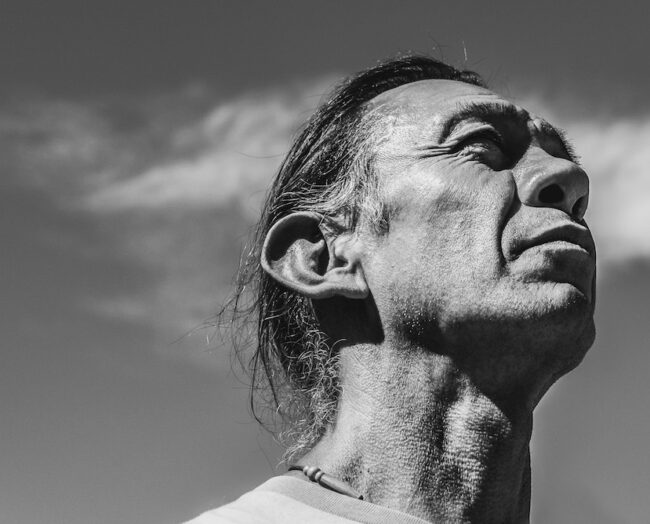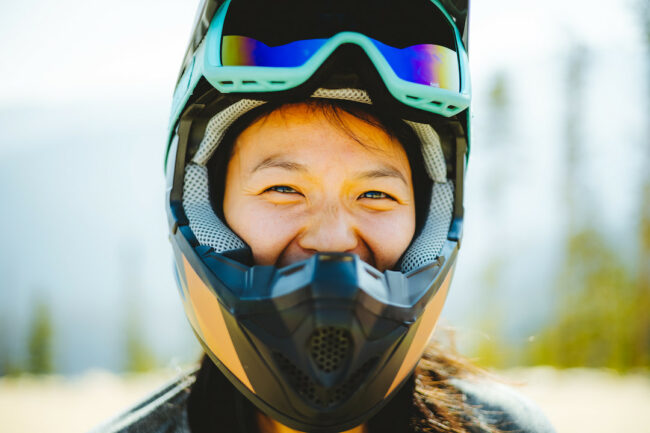






Micheli Oliver
Heidi: How did your photographic journey start and what memories do you have from your first images?
Micheli: Growing up my Dad captured photos and video of everything. He wanted to record it all, remember it all and later he would cherish it all. As a result my early years are a combination of photos, videos and real memories. Storytelling with cameras have been woven into my life for as long as I can remember. My first time really connecting with a camera, however, wasn’t until my junior year of High School when I took a film photography class. We developed our own film and I was fascinated with the tedious process, but after that it was many years before I picked up a camera again. I graduated from college and knew without a doubt that all I really wanted to do in this life was to tell stories. With money from graduation gifts from relatives I bought my very first digital camera.
How has your Niisitapi and Shawnee cultures informed your work and how has your eye evolved?
My cultures as a mixed person, from Blackfeet, Shawnee, Irish and Italian heritage, have shaped many aspects of my storytelling. My photos tell stories of resilience, of joy and of truth that are unique to my communities. In addition to the focus of stories I can tell the way I wield my camera is shaped by my Indigenous communities. It’s imperative to me to shoot with compassion, consent and reciprocity, understanding that the stories of who we are and the images created are extremely personal.
Did you always want to be an artist?
I’ve always wanted to be a storyteller. The moment I learned to write I began to write fantasy stories. Along the way, however, I stopped taking storytelling as a serious endeavor for my life. I started listening to what sounded good to relatives, what paid well and what was seen as a clearly successful job. I’ve also always cared for humans, so I began college as a pre-medical student. If I’m being honest I liked the way being a doctor sounded. Then I had a realization that I could be happy with my studies and fell in love with geography. It was a way to study the land and the integral relationships of humans with the land.
My family was at first confused by my decision to switch majors. Both my parents grew up very poor and they operate in a scarcity mindset because for them that’s how they’ve survived. They want more for me as an adult, they wanted consistent paychecks and a solid career path. My parents have always had my best intentions in mind, but they saw how happy Geography was making me and they eventually began to understand. Slowly I explained that because of their sacrifices I am now able to do what I love both as a geographer and a photographer. It was a combination of trusting my intuition and following what comes to me naturally.
You mentioned drawing inspiration from your ancestral lands and those who existed before you, how do you hope to use your gift reciprocally?
I believe to get to know a land, to protect and love a land, you must first know her people. I hope to tell the stories of original peoples and in doing so non-natives can truly learn how to protect the environment. To me that is the best gift I can give earth mother in return for all that she gives us.
Broadly speaking a portrait is the art of capturing the inherent character and essence of a person, why do you gravitate to this genre of photography as I know authentic representation is a cornerstone to your work.
Expression, eyes, the up close and sometimes uncomfortable, are to me an undeniable truth of what it is to be human. So as a storyteller the truth of being human is what a portrait represent. Each portrait to me is a human truth, a visceral moment of intimacy with a person, my camera and myself. There is also a simplicity to eliminating all other factors of a photo aside from eyes and expression. It’s the raw moments that create authenticity of story and personhood. Additionally I trust what comes naturally to me, taking portraits is not only natural, but sometime I truly love to do.
How are you using your voice and art form “to keep Indigenous languages burning bright, and steward Mother Earth and relationships” in your work?
Art of any form is resistance. Art centering Indigenous, Black, Brown, Queer and underrepresented peoples is way to resist a dominant heteronormative society. Art is born from counter culture change makers, rebels, loud mouthed lovers of life and truth, and my art is full of the latter people. With each story heard loud and clear, we are pushing back at a society that has tried to eradicate an Indigenous way of life. With this collective empowerment, too, we are cultivating a generation that is proud to be Indigenous, proud to keep our cultures, languages and practices alive.
What personal projects are you working on now?
Currently I’m working on a few different projects revolving around being a guest on Native lands that are not my own. I’ve been getting to know the ocean in particular. Recently I was on Tlingit lands fishing with my family, which has been a long standing tradition my Uncle traded for in years past. Then after that I traveled down the coast of California and got in the water nearly everyday. This lead me into some personal photo projects centering on joy, gratitude and what it means to be a guest.